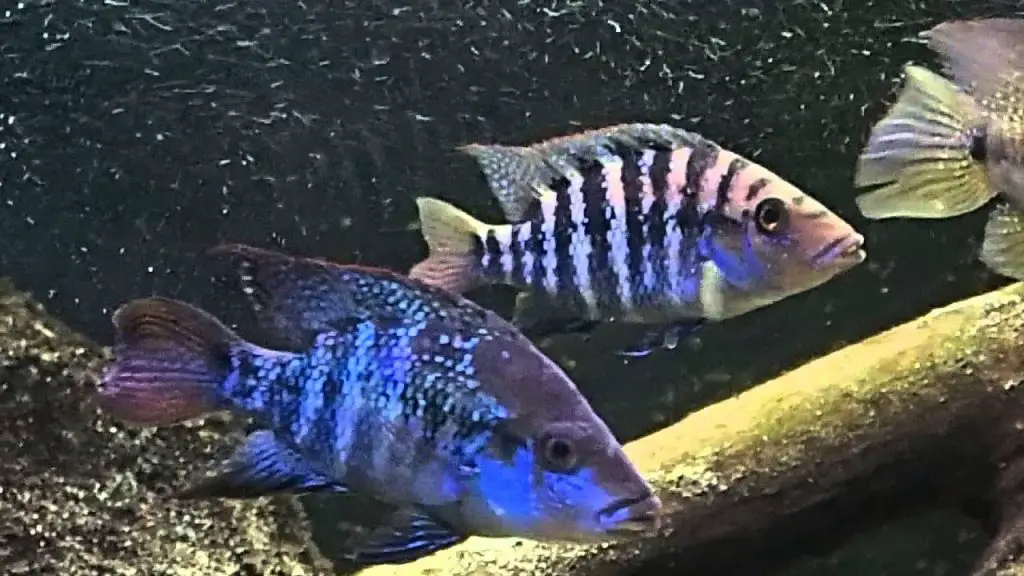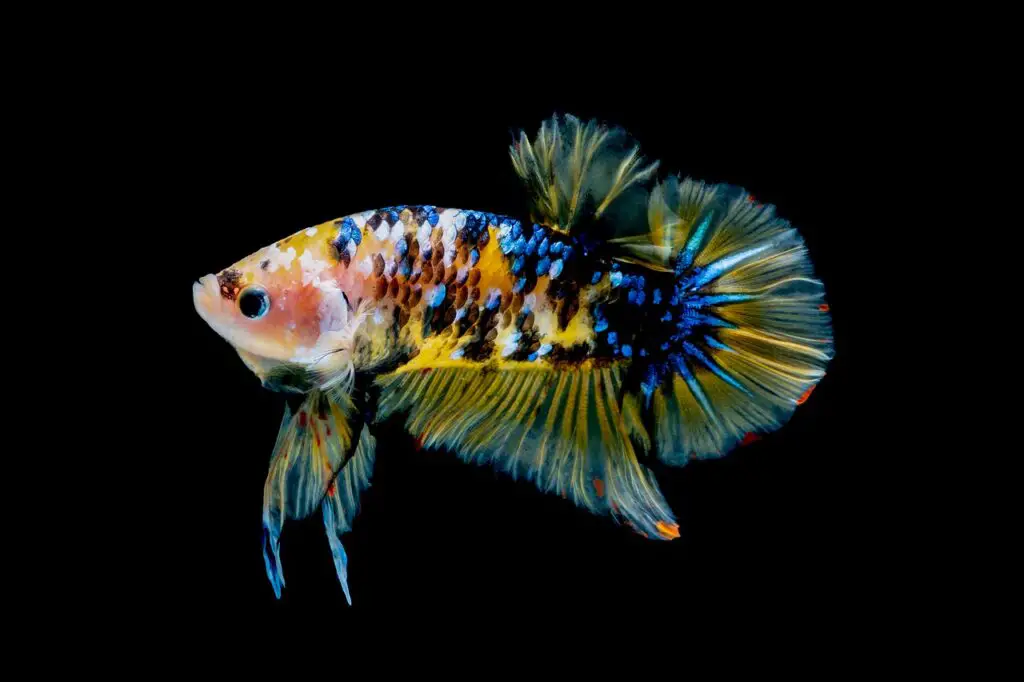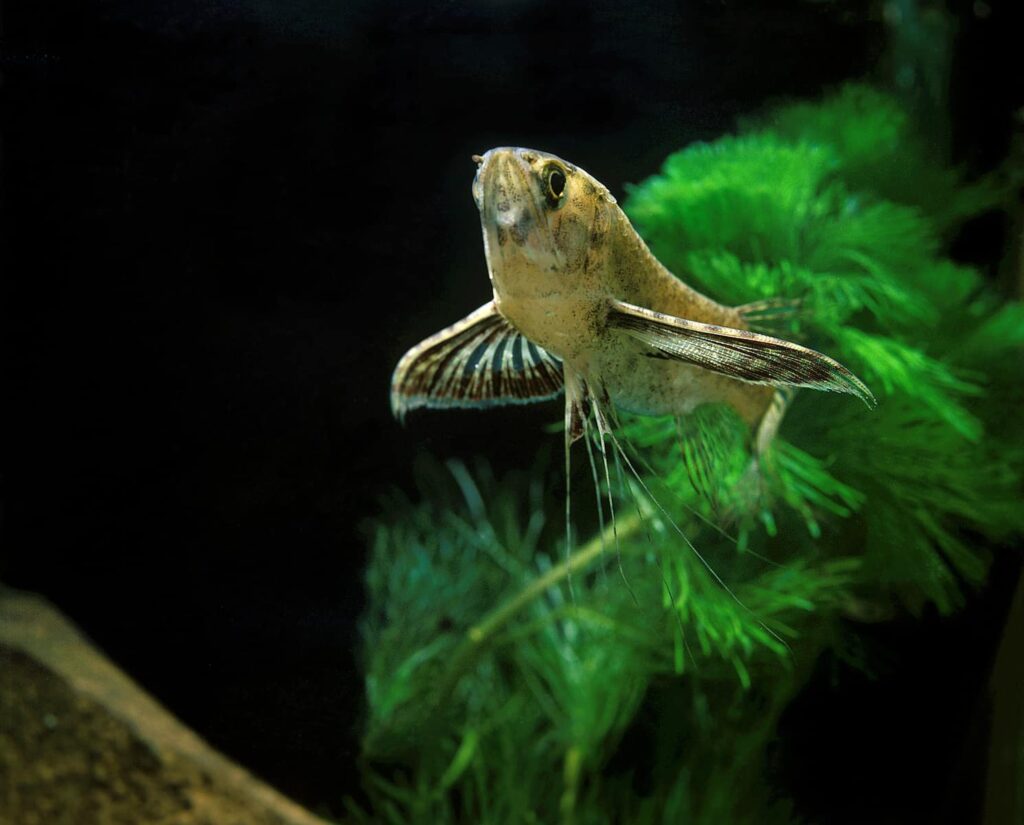Introduction
If you are thinking of adding Astatheros robertsoni to your aquarium, you are far from alone, as these beautiful blue cichlids are popular with people everywhere, and make great tank inhabitants. However, you do need to understand them before you do this.
This cichlid is a showy, attractive fish that fares well in mildly aggressive tanks, although it may be vulnerable if it’s kept with highly aggressive fish. It is sometimes called the Blue Sifter, the Roberts Cichlid, the Emerald Cichlid, or the Turquoise Cichlid.
In this article, we’re going to explore more about the Astatheros robertsoni so you can determine whether this fish would be suitable for your tank or not.
What Are The Names For Astatheros Robertsoni?
There are quite a few different names for this fish, as mentioned above – so you may hear them referred to as the False Firemouth Cichlid, the Turquoise Cichlid, the Roberts Cichlid, the Blue Sifter, the Emerald Cichlid, or Robertson’s Cichlid.
It might surprise you that these fish have so many names, but this is probably partly due to their popularity and bright colors.
Where Do Astatheros Robertsoni Come From?
These fish are native to Central America, and they are found in several countries, including Mexico, Honduras, Belize, and Guatemala. They mostly inhabit lakes and rivers, and they prefer slow moving waters, with sand or mud rather than sharp stones.
What Are The Differences Between Males And Females?
The males of this species tend to be bigger and brighter than the females, which means they are usually fairly easy to tell apart. The colors of the males can vary depending on their location, and they often have more iridescence than the females.
Females tend to have slightly shorter fins, but both sexes look pretty similar otherwise. You may need to look closely to differentiate between the two.
How Do You Breed Them?
Breeding these fish can be pretty challenging, and few people successfully breed them in captivity. If you want to attempt it, you will need some substrate spawner and a large enough tank with good conditions for the male and female.
You should also be aware that these fish will become highly aggressive when they are ready to mate and when they have young in the tank, which makes them more challenging to breed.
If you successfully get two of these fish to pair, they will soon lay eggs and protect the fry once they hatch. The fry usually take about 8 days to become free swimming, but be aware that other fish in your tank will unquestionably eat the fry if they get the opportunity, so these will need to be removed and placed in a nursery tank if they are to survive.
Are They Aggressive?
Part of what makes Astatheros robertsoni so popular is the fact that they are not particularly aggressive fish. Although many cichlids will attack their other tank mates, Astatheros robertsoni are considered only mildly aggressive, so it’s easier to pair them up with other tank mates.
You should bear in mind, however, that almost all cichlids are somewhat aggressive, so your fish may bully smaller and more timid fish.
The Astatheros are also large enough that they should rarely be bothered by other fish; they are too big to be at risk of bullying in most cases.
This, combined with their amazing colors, makes them an ideal option for tanks where you want to display many different kinds of fish.
Conspecific Temperament
Unfortunately, Astatheros robertsoni are highly aggressive toward other cichlids and will regularly attack them. This also makes them more difficult to breed, because there is a high risk of them attacking each other, instead of pairing up.
It is possible to keep them in the same tank if they have enough space and decor, but non-paired fish will need around 300 gallons if they are going to remain unaggressive toward each other. Once two fish have paired up, they should cope in smaller spaces, but this is a challenge to be aware of.
A lot of people think that because Astatheros robertsoni are not aggressive toward other fish, they will be fine with their own kind – but this is often not the case.
How Big Do They Get?
These fish can reach up to 10 inches, although the females tend to be slightly smaller than the males. Many will stay smaller than 10 inches, but with the proper care and conditions, they can get surprisingly large.
What Kind Of Environment Do They Need?
These cichlids like to be kept at a steady temperature between 75 and 78 degrees F, so you don’t have a lot of leeway in terms of the temperature. They prefer a water pH of 7.2 to 8.0. Make sure you are regularly testing your water, and make corrections if the acidity levels change, or your fish may get sick.
Astatheros robertsoni prefer hard water, so don’t use any softeners. They need quite a lot of space once they are mature fish, so consider around 180 gallons, or more. The tank size will depend on the other fish you have in it, but being kept in a small space will make the fish more aggressive, and could make them more vulnerable to diseases.
How Hard Are They To Keep?
These cichlids are generally considered fairly simple to keep, partly because of their size and their low aggression levels. They are often ranked at a difficulty level of 2 (although you should bear in mind that this doesn’t apply to breeding them in captivity, which is considered very challenging).
If you are keen to have cichlids in your tank, Astatheros robertsoni are probably among the easiest options because so many other cichlids are aggressive. Their bright colors make them satisfying stock, and their size ensures they are eye-catching and attractive.
Conclusion
Astatheros robertsoni are beautiful fish that will add a lovely flash of blue to any aquarium, and they are pretty easy fish to look after, provided that you have enough space for them. You should make sure your tank environment is suitable and that you don’t have any incompatible species, however.



